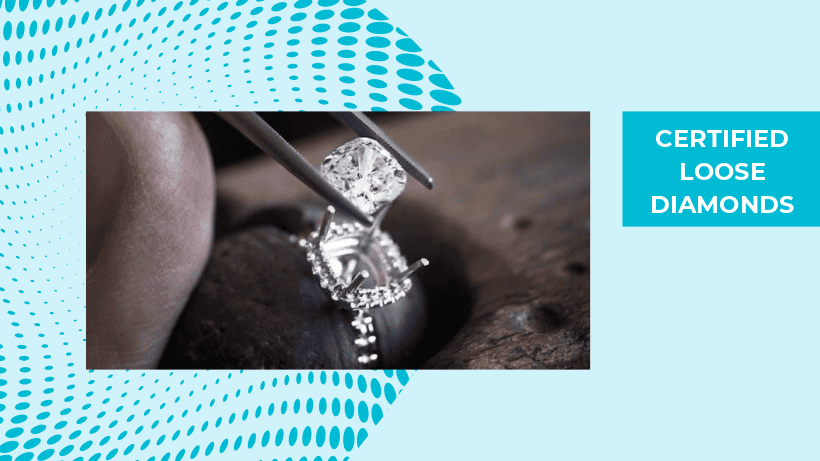Diamonds are considered one of the world’s most valuable and luxurious gemstones. However, with the vast array of options available, it can be a challenge to determine which natural diamonds are of high quality and worth the investment.
This is where diamond certification comes in. Gemological Institute of America (GIA), American Gem Society (AGS), and International Gemological Institute (IGI) are the three most widely recognized diamond certification organizations in the industry.
What Is Diamond Certification?
Diamond certification objectively evaluates a diamond’s characteristics, such as its carat weight, color, clarity, and cut. It assures consumers of the diamond’s quality, authenticity, and value.
It can also help authenticate a diamond’s origin, which is important for ethical and sustainable sourcing. The certification process involves a professional gemologist grading the diamond according to strict industry standards.
GIA Certifications
GIA is a non-profit organization that has been setting the standard for diamond grading since 1931. GIA-certified diamonds are recognized as the gold standard in the industry, and their grading system is used by most diamond dealers and jewelers worldwide. They provide a comprehensive analysis of a diamond’s quality and characteristics.
Each certificate includes the diamond’s carat weight, color, clarity, cut, and dimensions, as well as a plot diagram showing the location of any internal or external flaws. They also provide a unique report number and security features to ensure the authenticity of each certificate.
One unique feature of GIA-certified diamonds is their focus on diamond cut quality. It evaluates a diamond’s cut based on its proportions, symmetry, and polish and assigns a grade ranging from excellent to poor.
This is important because a diamond’s cut affects its brilliance, fire, and overall appearance.
AGS Certifications
AGS is a non-profit organization that was founded in 1934. AGS-certified diamonds are highly respected in the industry, particularly for their emphasis on diamond cut quality. They provide detailed information about a diamond’s carat weight, color, clarity, and cut.
They also include a grading report that evaluates the diamond’s cut based on seven factors: brightness, fire, and scintillation. AGS uses a unique grading system that assigns a score from 0 to 10 for each factor, with 0 being the highest possible score.
AGS-certified diamonds also include a Light Performance map, which shows the diamond’s brightness, fire, and scintillation performance. This unique feature gives consumers a visual representation of how the diamond will perform in different lighting conditions.
IGI Certifications
IGI is a for-profit organization that was founded in 1975. IGI-certified diamonds are recognized worldwide and are particularly popular in Europe and Asia. They provide a detailed analysis of a diamond’s quality and characteristics, including its carat weight, color, clarity, and cut.
They also include a plot diagram that shows the location of any internal or external flaws. IGI uses a unique color grading system that evaluates diamonds on a scale from D (colorless) to Z (light yellow or brown). IGI-certified diamonds also include a cut grade, which evaluates the diamond’s proportions and symmetry.
Which Certification is Best?
While each certification organization has its unique features, there is no one “best” certification. All three organizations are respected in the industry and provide consumers with an assurance of quality and value.
The choice of which certification to choose ultimately comes down to personal preference and the buyer’s specific needs. No matter which certification you choose, you can have conflict-free diamonds and confidence that your diamond has been objectively evaluated and meets industry standards for quality and value.
In Conclusion:
When purchasing a diamond, the conflict-free diamonds certification is just as important as the diamond itself. GIA, AGS, and IGI are three of the industry’s most reputable diamond certification organizations, each with unique features and benefits.
By understanding the differences between these certifications, you can make an informed decision and purchase a diamond that meets your needs and budget.
